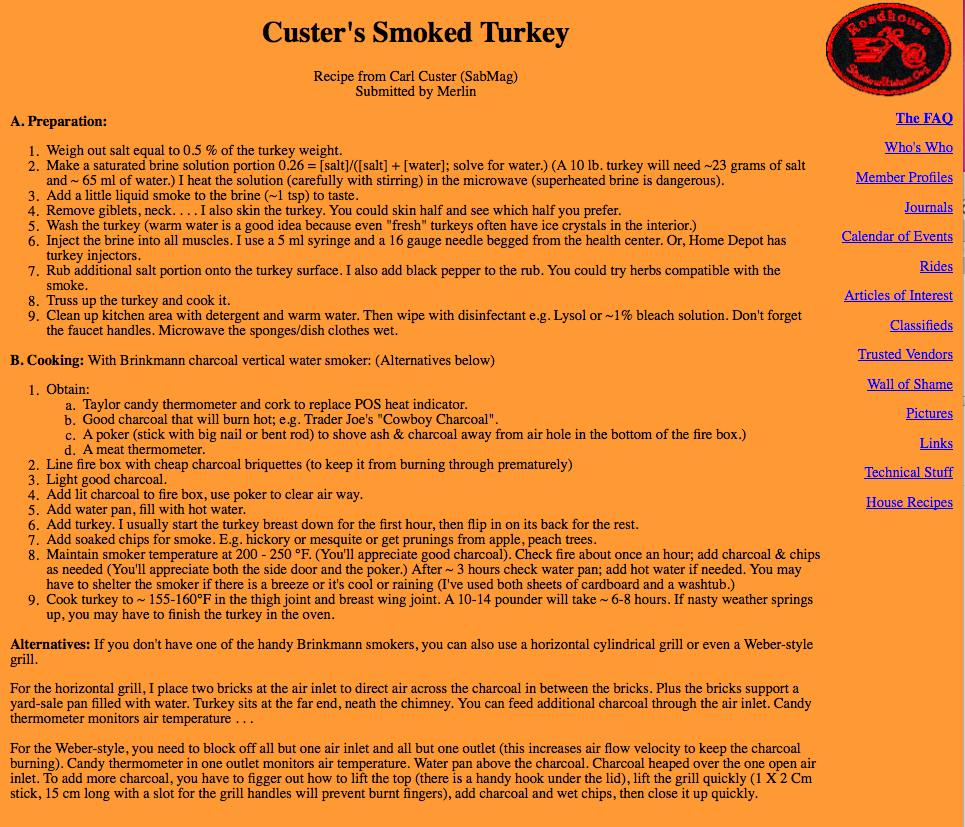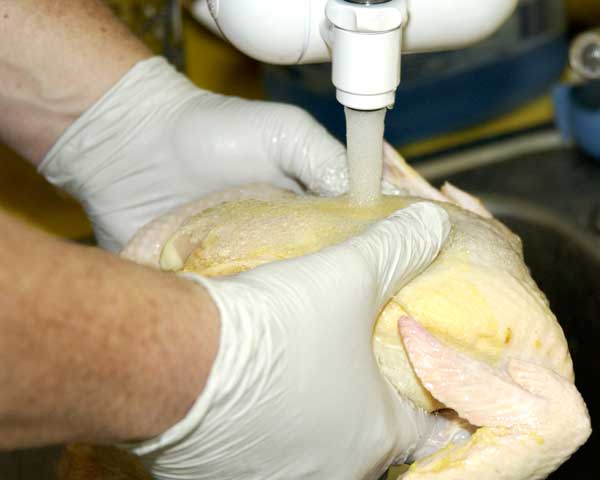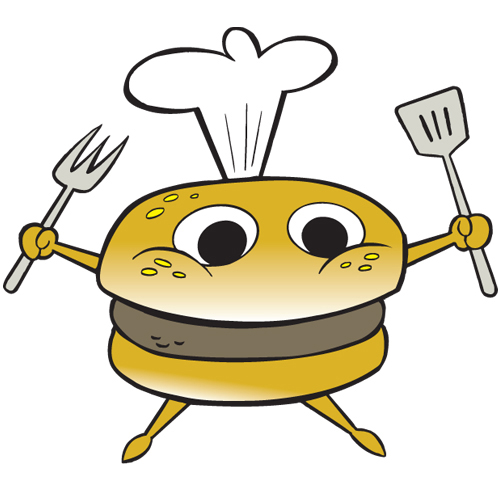Food safety sage Carl Custer (left, exactly as shown) shares his version of turkey time today from Bethesda, Maryland:
My nephew comes over with three gallons of peanut oil and a brined turkey to use my tamale steamer/turkey fryer. Instructions say 350°F oil for 52 minutes. .jpg) At 35 minutes I pull it out and check deep thigh temperature with a Comark PDT 300.
At 35 minutes I pull it out and check deep thigh temperature with a Comark PDT 300.
It’s 175°F. ¡Ay carumba! Into the kitchen and double check deep breast temperature: 145! Male puppy! Back to the fryer for another 10 minutes.
Deep breast temperature in several places is now >170°F.
Earlier, a brine injected turkey goes into the grill/smoker at 7:00 a.m. Yawn.
It’s cold and drizzly so difficult to keep air temperature >200°F even with tarp and wind shields. Pull turkey at noon; it’s 150°F. Put into a 350°F oven with an 8 cm "L-shaped" probe. I wrap the probe with a wet paper towel so it doesn’t act as a "potato nail" and give a false high reading. An hour later it’s 160°F and coasting up to 168°F.
Mmmm mmmm good and safe.
Time may be on your side but temperature is better.
Carl also notes the raw birds were handled with latex gloves, and sinks were washed with detergent & paper towels, followed by 70% ethanol.
Texas Aggie food microbiologist, Carl Custer, sojourning in Merryland for past 38 years, smokes turkey (and other animal parts) following scientific principles.


 pound, it was a protein centerpiece bargain.
pound, it was a protein centerpiece bargain. Depending on where you live, a garage can work equally well for a long, slow thaw.
Depending on where you live, a garage can work equally well for a long, slow thaw. (Poor Canadians, still told to cook to 185F, but that may change to 180F;
(Poor Canadians, still told to cook to 185F, but that may change to 180F;  see a deli that serves an at-risk population with flies on the wall, surfaces that are not easily cleanable, and temperatures in the danger zone. And zero handwashing. These are actual pics from the food service area.
see a deli that serves an at-risk population with flies on the wall, surfaces that are not easily cleanable, and temperatures in the danger zone. And zero handwashing. These are actual pics from the food service area..jpg)
 Health District, primarily related to a salad bar that wasn’t keeping foods at the proper temperature.
Health District, primarily related to a salad bar that wasn’t keeping foods at the proper temperature. The Telegraph reports
The Telegraph reports and associate administrator at Central Louisiana State Hospital have, as they politely say in the South (and smile while the knife goes in), left the facility.
and associate administrator at Central Louisiana State Hospital have, as they politely say in the South (and smile while the knife goes in), left the facility. of food under insanitary conditions, has entered into a consent decree of permanent injunction in the U.S. District Court for the Southern District of California.
of food under insanitary conditions, has entered into a consent decree of permanent injunction in the U.S. District Court for the Southern District of California.  them just before cooking with an equal amount of kosher salt and black pepper, then seared them in a steel skillet pre-heated to 450°F (which was temped with an infrared thermometer before adding the patties). The ambient air in the kitchen was at an unbearably hot 76°F. Each patty was cooked to an internal temperature of 125°F, and was then rested for five minutes at room temperature before being autopsied for examination.
them just before cooking with an equal amount of kosher salt and black pepper, then seared them in a steel skillet pre-heated to 450°F (which was temped with an infrared thermometer before adding the patties). The ambient air in the kitchen was at an unbearably hot 76°F. Each patty was cooked to an internal temperature of 125°F, and was then rested for five minutes at room temperature before being autopsied for examination.